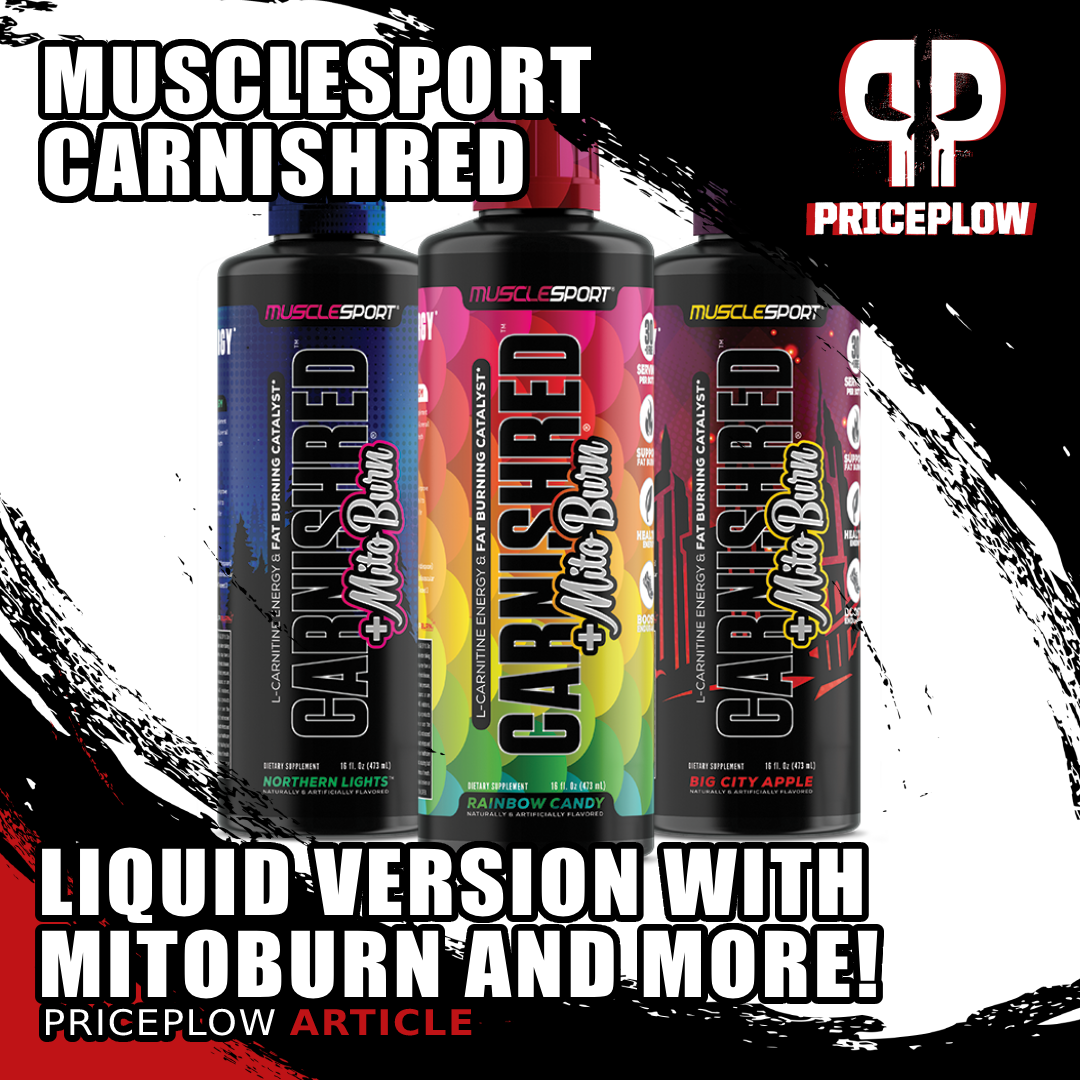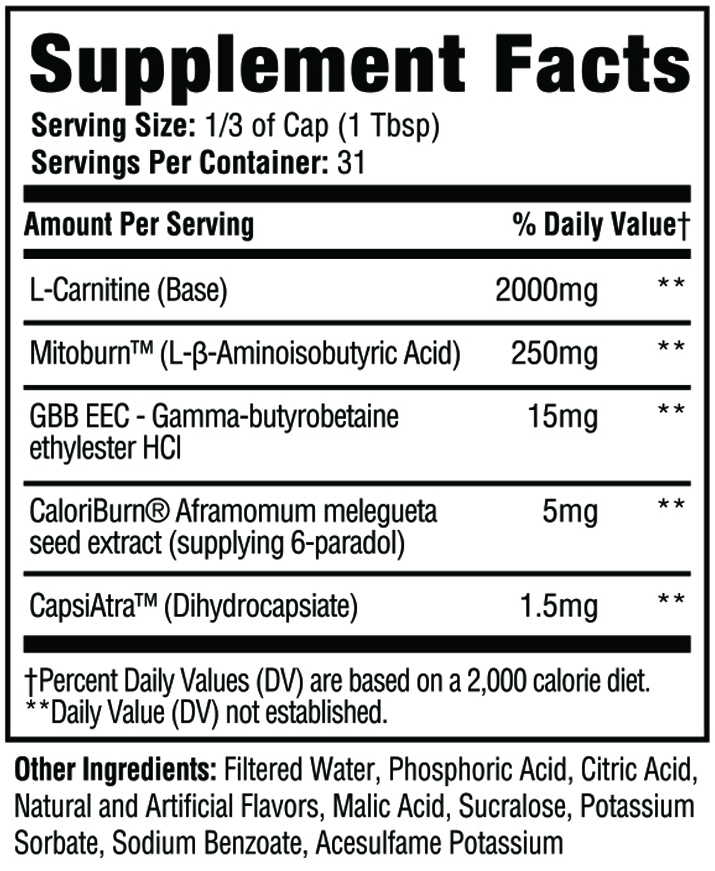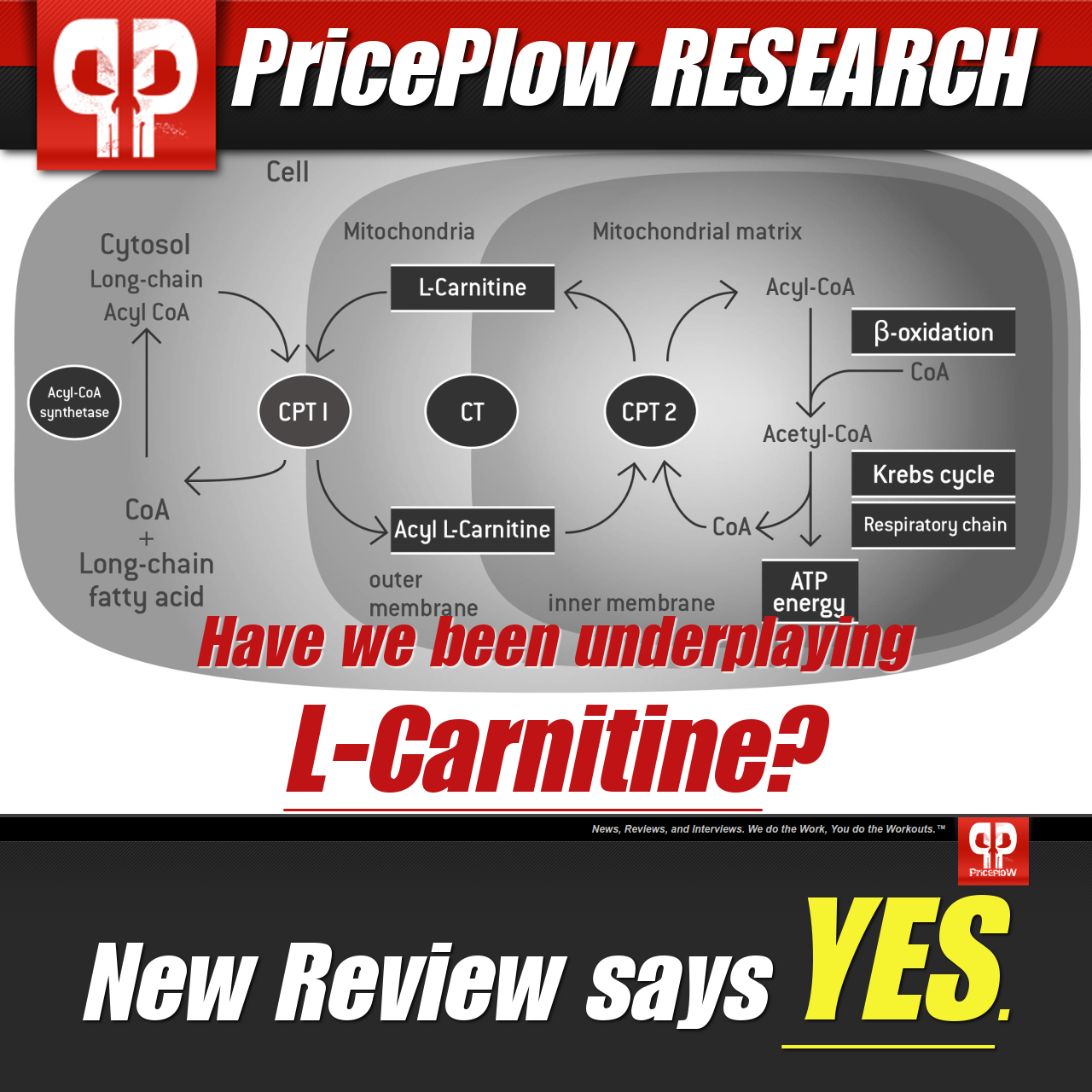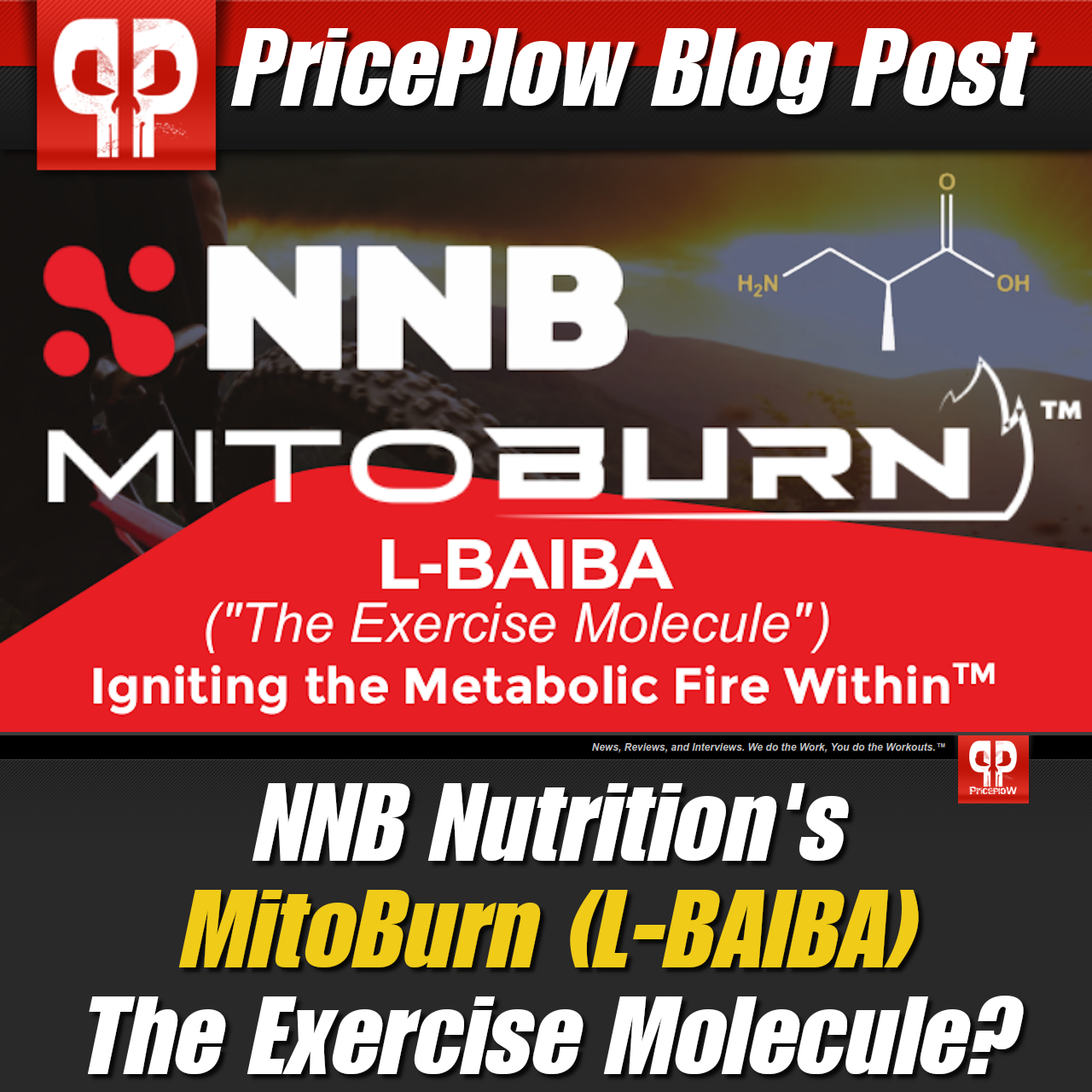Under the leadership of Jason Mancuso, Musclesport has carved out a distinct identity for itself, thanks not only to their innovative formulations but also their imaginative flavor offerings. This year we had a ton of fun with MuscleSport's Summer Scoops series of Lean Whey flavors, which includes delightful options such as Apple Pie a La Mode, Toasted Almond, Ice Cream Pistachio, Rocky Road, and the return of Orange Creamsicle.
CarniShred – MuscleSport's Carnitine-Based Fat Burner
Today we're writing about MuscleSport's CarniShred, a fat-burning supplement that makes great use of carnitine and its synergistic effects with an awesome-but-infamous ingredient called GBB.
Carnitine is fast becoming one of our favorite ingredients. It seems to be another taurine, in the sense that it's good for almost anything. Every time we look, we find yet another benefit associated with carnitine supplementation, so we love seeing companies lead with it.
Let's get into how this formula works, but first, check the PricePlow news and deals:
Musclesport CarniShred +Mitoburn – Deals and Price Drop Alerts
Get Price Alerts
No spam, no scams.
Disclosure: PricePlow relies on pricing from stores with which we have a business relationship. We work hard to keep pricing current, but you may find a better offer.
Posts are sponsored in part by the retailers and/or brands listed on this page.
This area is reserved for Team PricePlow's upcoming videos.
Subscribe to our channel and sign up for notifications so you catch it when it goes live!
Musclesport CarniShred +MitoBurn Ingredients
In a single 1/3 cap (1 tbsp) serving of CarniShred from MuscleSport, you get the following:
-
L-Carnitine (Base) – 2,000 mg
L-carnitine helps your cells generate energy by shuttling glucose and fatty acids to your mitochondria, which then turn that fat and sugar into adenosine triphosphate (ATP).[1,2] Carnitine also upregulates important enzymes your mitochondria use to synthesize ATP,[3,4] which can have a stabilizing effect on overall mitochondrial operation.[5]
Carnitine doesn't only improve fatty acid metabolism – it's necessary for cellular fat burning.[6] Physicians ]check for carnitine deficiency as a method for diagnosing children with underactive fat metabolisms,[7] and there's actually a malady called primary carnitine deficiency that renders the body incapable of burning fat for fuel.[8]
The importance of carnitine's impact on fatty acid and glucose metabolism should be emphasized. If you've got fat to lose, chances are your glucose metabolism is impaired to some degree, and carnitine can potentially help restore your body's metabolic flexibility,[9] which can go a long way towards improving insulin sensitivity.[10,11]
Multiple studies have shown that carnitine supplementation is associated with healthy weight loss,[12,13] a benefit that is thanks in large part to its impact on glycemic control and insulin signaling.[10]
After reading a new review based upon 100 citations, we are finding fewer and fewer reasons not to take ~2g L-Carnitine each day
Carnitine enables the existence of brown adipose tissue (BAT)
One of carnitine's most important fat burning mechanisms is its ability to increase your body's proportion of brown adipose tissue (BAT), a type of body fat that burns fat. Once again, we see that carnitine is actually necessary for the generation of BAT. In a world where nutritional researchers are generally hesitant to make definitive proclamations, one study title informs us that "Carnitine Is Necessary to Maintain the Phenotype and Function of Brown Adipose Tissue."[14]
The importance of BAT is kind of a tricky topic, so if you need a refresher or have never heard of this before, check out our topic sidebar on the right-hand side of this article.
Carnitine also activates BAT
There are a number of factors that can cause your body to activate NST in your BAT. Obviously, cold exposure is one.[17] But it's not the only one. As we will see, some of the ingredients in this formula can cause BAT to burn extra calories, which makes carnitine a great ingredient to combine them with.
And in fact, carnitine itself can also activate BAT. Some research has found that carnitine supplementation can significantly increase body temperature,[14] which reflects increased metabolic activity in BAT.
-
MitoBurn (L-β-Aminoisobutyric Acid) – 250 mg
MitoBurn is a trademarked preparation of L-β-Aminoisobutyric Acid (L-BAIBA) from NNB Nutrition.
L-BAIBA is a myokine, a type of non-protein amino acid that your muscles generate during exercise. Myokines are messenger molecules, sort of like hormones – they play a signaling role by telling your cells whether to grow or catabolize muscle tissue.
The dietary precursor to L-BAIBA is valine, an essential amino acid that's also one of the three famous branched chain amino acids (BCAAs).[18] Once exercises triggers the conversion of valine into L-BAIBA, the latter then circulates around your entire body, and tells your muscle cells that exercise is underway. In response to BAIBA, your cells initiate a cluster of metabolic adaptations that help your body withstand and recover from exertion. Just to give two examples, BAIBA triggers increased fat oxidation and bone-protective mechanisms.[19]
MitoBurn (L-BAIBA) has flipped the fat burner niche on its head by supplying more of this exercise-based signaling molecule to dieters
Put another way, L-BAIBA is the molecule that actually causes many of the benefits associated with exercise. You can probably see where this is going – shortly after L-BAIBA's role was identified, scientists began to explore the possibility that it could function as exercise in a pill.
Amazingly, the answer to that question seems to be a tentative yes.
For example, if you'll recall our discussion of WAT vs. BAT in the sidebar, you may be interested to learn that physical exercise (all types, really) can convert WAT to BAT,[20] as well as activate existing BAT.[21] Well, L-BAIBA has been shown to do the same – it only drives the conversion, but also upregulates uncoupling protein 1, which is key to the occurrence of non-shivering thermogenesis.[22]
In fact, the laundry list of L-BAIBA's effects is pretty impressive. Research has found that it can:
- Accelerate fat burning[18,22-25]
- Increase ketone levels[26]
- Convert WAT to BAT[22,24]
- Increase insulin sensitivity and decrease blood glucose[18,25,27]
- Decrease systemic inflammation[24]
- Improve cholesterol and triglyceride blood markers[18,25]
- Increase bone density[28]
- Support kidney health[29]
What makes MitoBurn special
Unsurprisingly, many have tried to create an efficacious oral L-BAIBA supplement, most have fallen flat. NNB Nutrition's MitoBurn wa s a huge step towards that goal – it consists of only the BAIBA L-isomer, which is desirable as the D-isomer and R-isomer do not have the same benefits for human metabolism.[18,23]
MitoBurn from NNB Nutrition has been tested out to be a pure form of L-BAIBA, and has completely disrupted the supplement market!
If you want to read more about why we love MitoBurn, check out our article BAIBA: Weight Loss Ingredient Generates Exercise in a Pill?!.
-
GBB EEC, Gamma-butyrobetaine ethylester HCl – 15 mg
Gamma-butyrobetaine (GBB) is a carnitine precursor. Your body converts GBB into carnitine through the action of an enzyme named gamma-butyrobetaine dioxygenase (BBD).[30]
Although this might seem unnecessary thanks to the generous dose of carnitine that kicked off the CarniShred formula, there are actually important synergistic effects between supplemental L-carnitine and GBB.
To understand why, we have to talk a little about chemistry.
GBB sets your body's carnitine equilibrium
According to Le Chatelier's principle, also referred to as the law of chemical equilibrium,[31]
Your body converts GBB into L-carnitine, but it also turns excess carnitine back into GBB. Thus, we can maintain higher levels of carnitine by taking GBB to balance this equation.
GBB gets converted to carnitine, and vice-versa, until the two compounds reach chemical equilibrium. Excess GBB gets turned into excess carnitine – excess carnitine gets turned into excess GBB.
While BDD is converting GBB to carnitine, your gut microbiome is busy converting excess carnitine back into GBB.[32] The existence of this chemical equilibrium means there's a natural limit on how much a carnitine supplement can raise your carnitine blood levels. We can circumvent this, however, by taking GBB alongside the carnitine. With both sides of the equation balanced, higher levels of both GBB and carnitine can exist in equilibrium with each other.
So in other words, taking GBB with L-carnitine makes the latter more effective than it would be on its own.
There's another issue with carnitine supplementation – big doses cause unwanted gastrointestinal symptoms in many people,[33,34] so there's also a natural limit on the amount of carnitine you can take in one sitting. Again, GBB is a good strategy for boosting carnitine levels without putting too much strain on your gut.
Interestingly, GBB is also great for upregulating nitric oxide (NO).[35] This is not directly related to the goal of fat loss, but could help support higher levels of physical activity, which can help improve body composition in the long run.
The infamous (or famous?) GBB sweats
This next one is a little controversial. GBB is known for its ability to stimulate intense sweating. Some really hate this, while others love it – those in the latter camp argue generally feel that it means GBB is helping them get a better workout. Of course, GBB can increase NO and upregulate carnitine, but we think its impact on exercise performance is probably pretty minor.
However, the sweating itself can come with a number of important benefits. For one thing, sweating is one of your body's main detoxification mechanisms. It's particularly good for eliminating bisphenol A (BPA),[36] an endocrine-disrupting xenoestrogen, and polychlorinated biphenyls (PCBs),[37] which are associated with multiple undesirable effects, including carcinogenesis
Some research suggests that sweating might actually be your body's best mechanism for excreting many different toxic chemicals. This includes not just BPA and PCBs, but also urea (a toxic byproduct of protein metabolism), persistent organic pollutants, and heavy metals.[38]
-
CaloriBurn Aframomum melegueta seed extract (supplying 6-paradol) – 5 mg
CaloriBurn from NNB Nutrition is an extract of grains of paradise, a pepper plant that's native to western Arfica. The extract is standardized for 6-paradol, a phenolic ketone that's been shown to trigger non-shivering thermogenesis (NST) by activating BAT.[39] This means that it can increase the number of calories you burn in a day, potentially accelerating healthy fat loss[40-42] while improving glycemic control and serum triglycerides.[43]
In one study, women who took grains of paradise experienced significant reductions in visceral fat, a type of body fat that's particularly bad for cardiovascular and metabolic health.[44]
In another, healthy young men who took a single grains of paradise does saw their basal metabolic rate increase by 25 calories per hour for the duration of the two-hour study period.[45]
-
CapsiAstra (Dihydrocapsiate) – 1.5 mg
CapsiAtra, a trademarked sweet pepper extract developed by Glanbia Nutritionals, is standardized to contain 2.3% dihydrocapsiate by weight. This innovative extract was created as a competitive alternative to capsaicin-standardized extracts.
For a considerable period, capsaicin has held a prominent position in the industry thanks to its ability to promote fat loss by triggering both non-shivering and shivering thermogenesis![46,47] However, capsaicin can have adverse effects in susceptible individuals, including increased blood pressure and faster heart rate.[46] Its pungent taste can also deter certain consumers.
Dihydrocapsiate, on the other hand, exhibits similar beneficial effects,[30,48] aiding in the increase of calorie expenditure in those who use it, without the cardiovascular and gustatory drawbacks of capsaicin.[46]
Vanilloid receptor stimulation seems to be primary mechanism behind its thermogenic effects.[49]
All Available Flavors
Conclusion
The generous dose of carnitine is really the core of this formula, and stacking it with GBB is a powerful strategy for improving metabolic function and encouraging healthy fat loss. Of course, you have to be willing to put up with the GBB sweats – fortunately, most of our readers seem to fall into that category.
MitoBurn is an ingredient we always love to see, as L-BAIBA really is the closest thing we have to exercise in a pill. We specifically love seeing MitoBurn used – other preparations of L-BAIBA are simply not consistent enough to warrant spending your hard-earned dollar on them.
Musclesport CarniShred +Mitoburn – Deals and Price Drop Alerts
Get Price Alerts
No spam, no scams.
Disclosure: PricePlow relies on pricing from stores with which we have a business relationship. We work hard to keep pricing current, but you may find a better offer.
Posts are sponsored in part by the retailers and/or brands listed on this page.











Comments and Discussion (Powered by the PricePlow Forum)